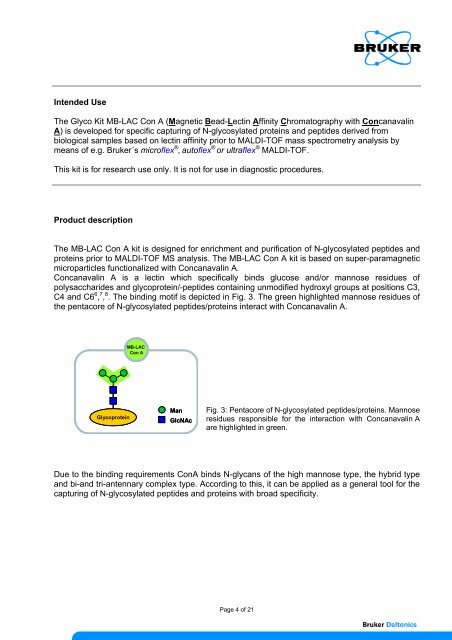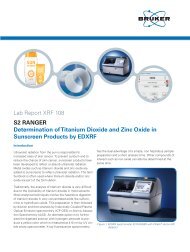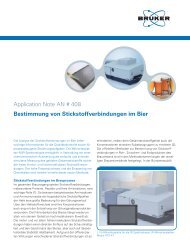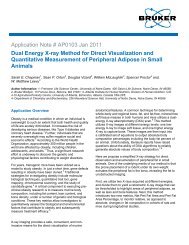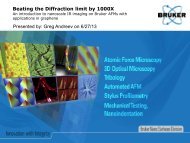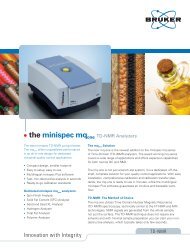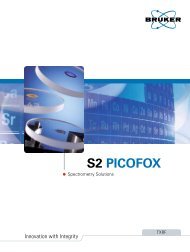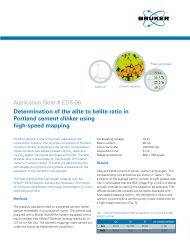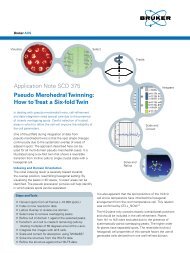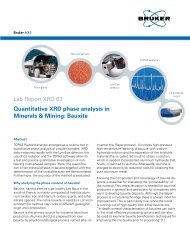Instructions for Use - Glyco Kit MB-LAC Con A - Bruker
Instructions for Use - Glyco Kit MB-LAC Con A - Bruker
Instructions for Use - Glyco Kit MB-LAC Con A - Bruker
Create successful ePaper yourself
Turn your PDF publications into a flip-book with our unique Google optimized e-Paper software.
Intended <strong>Use</strong><br />
The <strong>Glyco</strong> <strong>Kit</strong> <strong>MB</strong>-<strong>LAC</strong> <strong>Con</strong> A (Magnetic Bead-Lectin Affinity Chromatography with <strong>Con</strong>canavalin<br />
A) is developed <strong>for</strong> specific capturing of N-glycosylated proteins and peptides derived from<br />
biological samples based on lectin affinity prior to MALDI-TOF mass spectrometry analysis by<br />
means of e.g. <strong>Bruker</strong>´s microflex ® , autoflex ® or ultraflex ® MALDI-TOF.<br />
This kit is <strong>for</strong> research use only. It is not <strong>for</strong> use in diagnostic procedures.<br />
Product description<br />
The <strong>MB</strong>-<strong>LAC</strong> <strong>Con</strong> A kit is designed <strong>for</strong> enrichment and purification of N-glycosylated peptides and<br />
proteins prior to MALDI-TOF MS analysis. The <strong>MB</strong>-<strong>LAC</strong> <strong>Con</strong> A kit is based on super-paramagnetic<br />
microparticles functionalized with <strong>Con</strong>canavalin A.<br />
<strong>Con</strong>canavalin A is a lectin which specifically binds glucose and/or mannose residues of<br />
polysaccharides and glycoprotein/-peptides containing unmodified hydroxyl groups at positions C3,<br />
C4 and C6 6 , 7 , 8 . The binding motif is depicted in Fig. 3. The green highlighted mannose residues of<br />
the pentacore of N-glycosylated peptides/proteins interact with <strong>Con</strong>canavalin A.<br />
<strong>MB</strong>-<strong>LAC</strong><br />
<strong>Con</strong> A<br />
<strong>Glyco</strong>protein<br />
Man<br />
GlcNAc<br />
Fig. 3: Pentacore of N-glycosylated peptides/proteins. Mannose<br />
residues responsible <strong>for</strong> the interaction with <strong>Con</strong>canavalin A<br />
are highlighted in green.<br />
Due to the binding requirements <strong>Con</strong>A binds N-glycans of the high mannose type, the hybrid type<br />
and bi-and tri-antennary complex type. According to this, it can be applied as a general tool <strong>for</strong> the<br />
capturing of N-glycosylated peptides and proteins with broad specificity.<br />
Page 4 of 21


